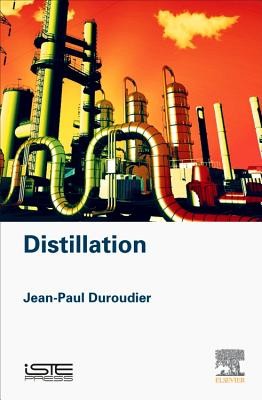
- We will send in 10–14 business days.
- Author: Jean-Paul Duroudier
- Publisher: ISTE Press - Elsevier
- Year: 2016
- Pages: 158
- ISBN-10: 1785481770
- ISBN-13: 9781785481772
- Format: 15 x 23.1 x 1.3 cm, kieti viršeliai
- Language: English
- SAVE -10% with code: EXTRA
Reviews
Description
Distillation, part of the Industrial Equipment for Chemical Engineering set, includes thirteen independent volumes that define how to perform the selection and calculation of equipment involved in the thirteen basic operations of process engineering, also offering reliable and simple methods.
Throughout these concise and easy-to-use books, the author uses his vast practical experience and precision knowledge of global research to present an in-depth study of a variety of aspects within the field of chemical engineering, with this volume focusing on the process of distillation.
Using both practical and theoretical examples, the author describes the various reactions and steps involved in separating out the components of a mixture to attain predefined levels of purity. By investigating different types of liquids, an array of column sizes, and the plates involved in distillation, readers will gain a wide understanding of the physics of liquids.
The book also details the methods needed to understand the machinery used in applied thermodynamics in the hopes of encouraging students and engineers to manually build the programs they need. Chapters are complemented with appendices that provide additional information and associated references.
EXTRA 10 % discount with code: EXTRA
The promotion ends in 23d.18:39:58
The discount code is valid when purchasing from 10 €. Discounts do not stack.
- Author: Jean-Paul Duroudier
- Publisher: ISTE Press - Elsevier
- Year: 2016
- Pages: 158
- ISBN-10: 1785481770
- ISBN-13: 9781785481772
- Format: 15 x 23.1 x 1.3 cm, kieti viršeliai
- Language: English English
Distillation, part of the Industrial Equipment for Chemical Engineering set, includes thirteen independent volumes that define how to perform the selection and calculation of equipment involved in the thirteen basic operations of process engineering, also offering reliable and simple methods.
Throughout these concise and easy-to-use books, the author uses his vast practical experience and precision knowledge of global research to present an in-depth study of a variety of aspects within the field of chemical engineering, with this volume focusing on the process of distillation.
Using both practical and theoretical examples, the author describes the various reactions and steps involved in separating out the components of a mixture to attain predefined levels of purity. By investigating different types of liquids, an array of column sizes, and the plates involved in distillation, readers will gain a wide understanding of the physics of liquids.
The book also details the methods needed to understand the machinery used in applied thermodynamics in the hopes of encouraging students and engineers to manually build the programs they need. Chapters are complemented with appendices that provide additional information and associated references.


Reviews